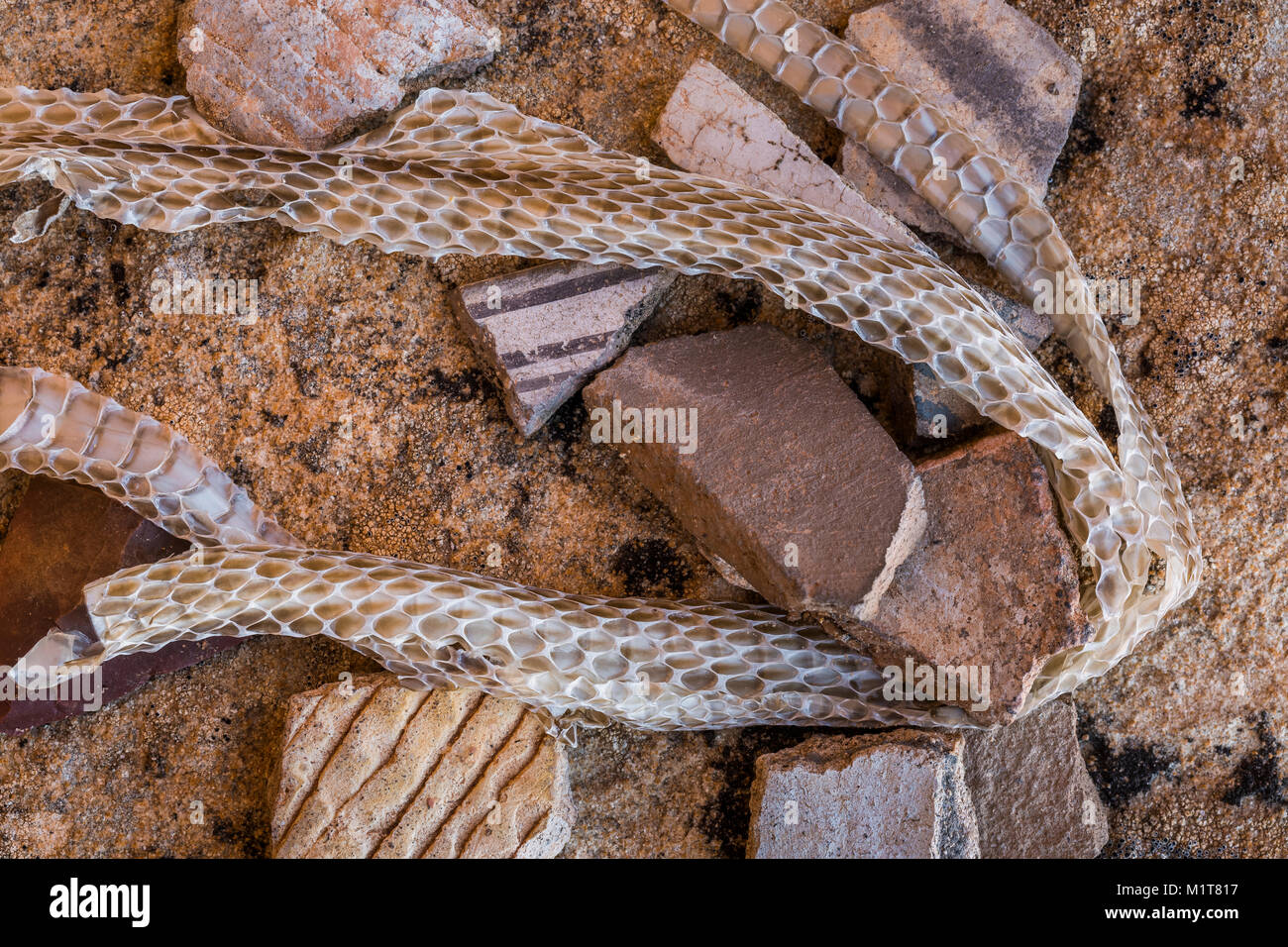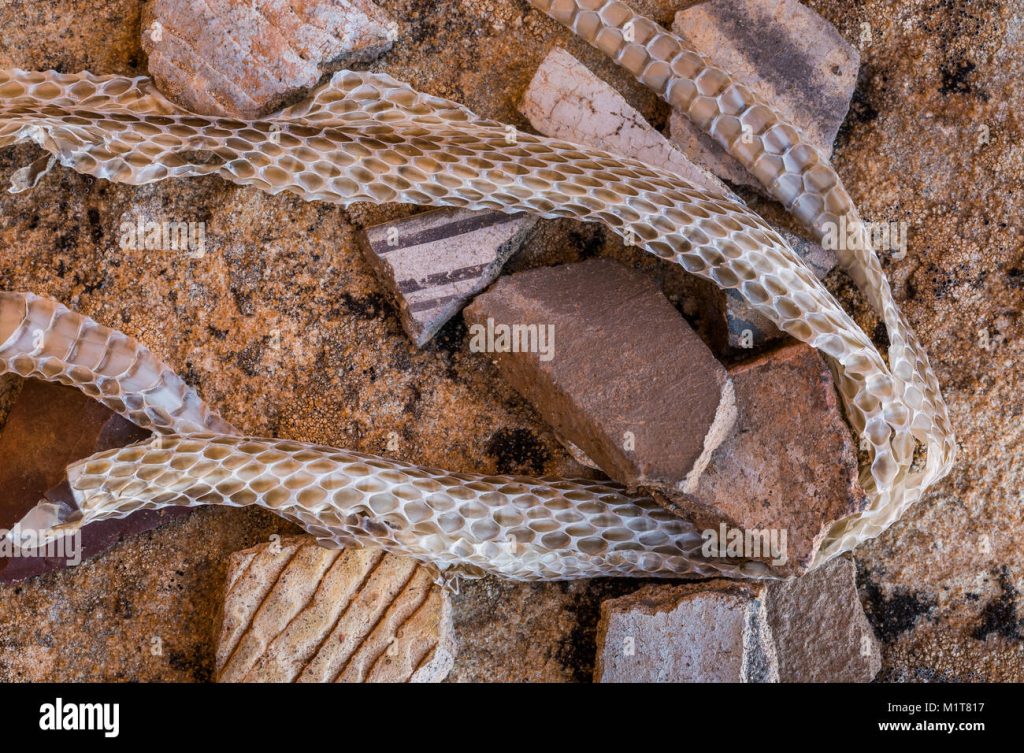Rattlesnakes are some of the most fascinating creatures in the world. Their venomous bite and signature rattle make them both feared and revered. But have you ever wondered what a rattlesnake skin looks like?
From the intricate patterns to the unique texture, a rattlesnake skin is truly a work of art. In this article, we’ll explore the different characteristics of a rattlesnake skin and what makes it so unique. So, get ready to dive into the world of these fascinating creatures and the skin they shed.
Rattlesnake skin is made up of overlapping scales that have a distinctive diamond-shaped pattern. The scales are dry, hard, and have a slightly rough texture. The color of the skin can vary depending on the species of rattlesnake, but it usually ranges from light brown to grayish-brown. Some rattlesnake skins may also have darker markings or bands.

What Does a Rattlesnake Skin Look Like?
Rattlesnakes are one of the most recognizable and feared snakes in the world. They are known for their distinctive rattle, which they use as a warning to potential predators. Another fascinating aspect of rattlesnakes is their skin. In this article, we will explore what a rattlesnake skin looks like and what makes it unique.
Physical Characteristics of Rattlesnake Skin
Rattlesnake skin is covered in scales, which are made of keratin, the same material that makes up our hair and nails. These scales are arranged in a distinctive pattern that varies depending on the species of rattlesnake. The scales are also colored differently, depending on the species and location of the snake.
One of the most distinctive features of rattlesnake skin is the presence of a rattle. This is a series of hollow, interlocking segments at the end of the tail. Each time the snake sheds its skin, a new segment is added to the rattle. The number of segments can give an indication of the age of the snake.
Texture of Rattlesnake Skin
Rattlesnake skin has a unique texture that is rough and scaly to the touch. This texture helps the snake to grip onto surfaces as it moves around. The scales are also slightly raised, which gives the skin a bumpy appearance.
The texture of rattlesnake skin can vary depending on the species and location of the snake. Some species have smoother skin, while others have more pronounced scales.
Coloration of Rattlesnake Skin
Rattlesnake skin is colored differently depending on the species and location of the snake. Some species have bright and vibrant colors, while others are more muted. The coloration of the skin is thought to help the snake blend into its environment and avoid predators.
The colors of rattlesnake skin can also change depending on the time of year and the temperature. In colder temperatures, the skin may appear darker, while in warmer temperatures, it may appear lighter.
Benefits of Rattlesnake Skin
Rattlesnake skin has been used for centuries in various cultures for its medicinal properties. It is believed to have anti-inflammatory and pain-relieving properties, and has been used to treat conditions such as arthritis and skin rashes.
In addition to its medicinal benefits, rattlesnake skin is also used in fashion. The distinctive texture and coloration of the skin make it a popular material for boots, belts, and handbags.
Rattlesnake Skin vs Other Snake Skins
Compared to other snake skins, rattlesnake skin is unique in its texture and pattern. While other snakes may have similar scales, the distinctive rattle at the end of the tail sets rattlesnake skin apart.
Rattlesnake skin is also thicker and more durable than many other snake skins, making it a popular material for boots and other leather goods.
Conclusion
In conclusion, rattlesnake skin is a fascinating and unique aspect of these iconic snakes. The distinctive pattern, texture, and coloration of the skin make it easily recognizable, and the presence of a rattle adds to its intrigue. Whether used for medicinal purposes or in fashion, rattlesnake skin is a valuable material with many benefits.
Frequently Asked Questions
Here are some commonly asked questions about rattlesnake skin appearance:
1. How can you identify a rattlesnake skin?
Rattlesnake skin is easily identifiable due to its unique pattern and texture. The scales are arranged in a diamond-shaped pattern, with a noticeable ridge running down the center of each scale. The colors can vary from light brown to dark brown with black markings. Additionally, the skin will have a rough texture due to the presence of keratin in the scales.
It’s important to note that rattlesnake skin is illegal to possess without a permit, so it’s best to admire it from a distance.
2. Can rattlesnake skin be mistaken for other types of snake skin?
While rattlesnake skin has a distinct pattern and texture, it can still be mistaken for other types of snake skin. One common mistake is confusing it with copperhead snake skin. Copperhead skin has a similar diamond-shaped pattern, but the scales are more rounded and lack the ridge found in rattlesnake skin. The colors of copperhead skin are also more dull, with less contrast between the light and dark areas.
If you’re unsure about the type of snake skin you’ve found, it’s best to consult a professional or avoid handling it altogether.
3. How does rattlesnake skin change as the snake grows?
As rattlesnakes grow, their skin becomes thicker and the scales become larger. This causes the pattern to become more stretched out and less defined. The colors also tend to become darker and more intense. The rattlesnake’s rattle will continue to grow with the skin, with a new segment being added each time the snake sheds its skin.
It’s important to note that rattlesnakes shed their skin multiple times per year, so finding a piece of skin doesn’t necessarily mean there is a live rattlesnake nearby.
4. Why is rattlesnake skin valued in some cultures?
Rattlesnake skin has been valued in various cultures for its unique appearance and symbolism. In some Native American traditions, rattlesnake skin is used in rituals to represent transformation and shedding old habits. It’s also been used in clothing and accessories, such as boots and belts.
However, it’s important to note that the use of rattlesnake skin is controversial and can contribute to the decline of rattlesnake populations. It’s essential to only obtain rattlesnake skin legally and sustainably.
5. How can you tell if a piece of rattlesnake skin is old or new?
New rattlesnake skin will have a shiny appearance and be more flexible than old skin. The scales will be tightly attached to the skin, and the rattle will be small and tightly coiled. Old rattlesnake skin will be dull in appearance and stiff to the touch. The scales may also be loose or missing in some areas, and the rattle will be larger and more spread out.
If you’re unsure about the age of a piece of rattlesnake skin, it’s best to consult a professional.
The Incredible Way Snakes Shed Their Skin | Real Wild
In conclusion, a rattlesnake skin is a fascinating and unique piece of nature. The intricate patterns and textures of the skin make it easy to identify and admire. The varying shades of brown, gray, and black give the skin a distinct appearance that makes it stand out from other snake species.
Not only is a rattlesnake skin visually appealing, but it also serves as a protective layer for the snake. The skin is thick and durable, allowing the snake to move through rough terrain and protect itself from predators.
Overall, learning about a rattlesnake skin can provide insight into the fascinating world of nature. Whether you are a snake enthusiast or just curious about the natural world, the beauty and functionality of a rattlesnake skin are sure to capture your attention.


